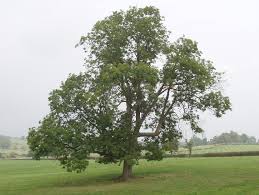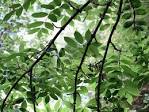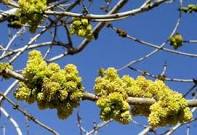Ash Fraxinus excelsior
Ash, a check on peace is Ash for of it are made spear shafts by which the piece is broken. Checking of peace. Flight of beauty, a weavers beam. Flight of beauty. Book of Ballymote 1391 Ash fact file Fraxinus excelsior ( Latin). Nion (Ogham) Aesc( Anglo Saxon) Ash established itself later than some tree species after the last ice age and especially increased when Elm declined in Neolithic times. Ash timber as well as its wood has been sought after for centuries. It has been used to create early weapons such as bows and spears to the modern cavalry lance. Its other uses are diverse including tools, frames and shafts of vehicles both modern and ancient. It is the second most recorded timber tree in history and is the most commonly used plantation tree since the 17th Century. Ash casts a light shade and is light-demanding, living no longer than 200 years in normal conditions. If it grows in infertile soils and is thus forced to grow slowly it will live longer and as a coppice stool almost indefinitely! The largest stool in Bradfield woods is 18.5 feet across and is at least 1000 years old and still has good vigour. Traditionally Ash is the Warrior’s Tree, as it has been used for weaponry for thousands of years. In places such as Scandinavia and Denmark, its war-like qualities were emphasised through the war god Odin with his ashen spear. The Vikings were often known as Aescling- Men of Ash. They also knew Ash as the World Tree, Askr Yggdrasill, the centre of the universe around which everything moves. Its roots are in the Underworld guarded by a huge serpent, its trunk in the Middleworld; and its canopy in the Upperworld upon which sits an eagle and goats browse on its leaves. The spring, at its base, is where the Norns reside, who rule over the destiny of us all. In Celtic/Irish lore Ash is also known as the warrior’s tree as an Ash spear is wielded by the solar hero Lugh Lamfada and the early race of men in Irish stories called the Fir bolgs ( men of spears) were also said to wield superior ash spears. The spear and the sling were the only long range weapons used by the Irish Celts in the Bronze and Iron ages. There were said to be five sacred trees planted in Ireland and three of them were Ash for the warriors. Nion, the Ogham name for ash means, ‘a thing produced’ possibly implying a more subtle use of Ash, the spear ( especially when referred to as the weavers’ beam) is a magical tool to help heal and move people on in their lives. Sick children have been passed through a split ash tree for healing and it is said a shrew was sometimes buried in an ash tree to bring about healing e.g. ash by the church in Selborne in Hampshire. The juice of the ash tree has been used to protect infants from harm. The bark helps ease fevers, the leaves for rheumatism and also can be used as a laxative/diuretic. Its seeds were said to provoke lust and its decaying wood an active ingredient in an aphrodisiac powder. Ash crosses are made for sea protection and the Vikings were thought to use ash as a magical implement. In the past ash roots were carved into magical images. Ash wood is known as the perfect fuel for the fire and was traditionally used as the Yule log which is burnt at the Winter Solstice to celebrate this time of year, the birth of the Sun God. Many poems and songs have been written of Oak, Ash and Thorn giving these three trees a special place in our British traditions; and where the three grow together a magical place of wonderment. To learn more about native trees and plant folklore subscribe here.
2 Comments
6/3/2018 08:26:11 pm
It amazes me to know that there are still people who are taking trees seriously and they have been showing outmost respect. Well, all of us should do the said thing because not doing so might affect our lives negatively. What I mean by that is, they have been dedicating their lives protecting trees. That action is not just caring for the environment, it's an act of love already!
Reply
Leave a Reply. |
Details
Poetry of flowersJoin me to explore the flora of the British Isles on this blog. My intention is to attempt to capture the unique quality and beauty of each species of flower, tree or shrub. For every species featured I will be growing many more wildflowers to celebrate the joy of their existence, their intrinsic conservation value and bewildering array of uses. For nearly 30 years I have noted, studied and explored wildflowers in the field much to the patience of the walker beside me. To share this passion is a heartfelt plea to respect, preserve and care for all British Wildflowers no matter how common they seem. Archives
February 2024
Categories |




 RSS Feed
RSS Feed
